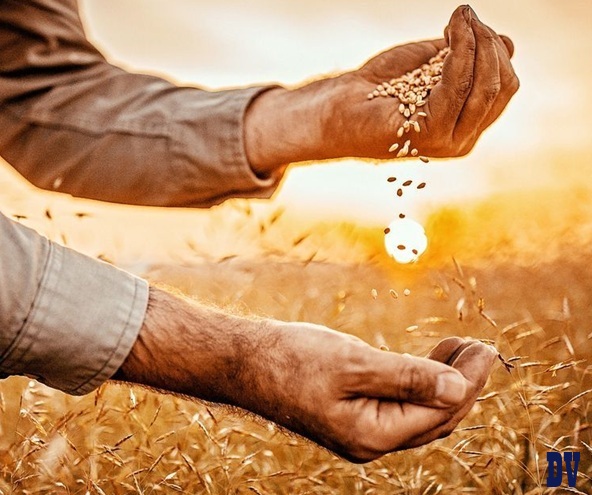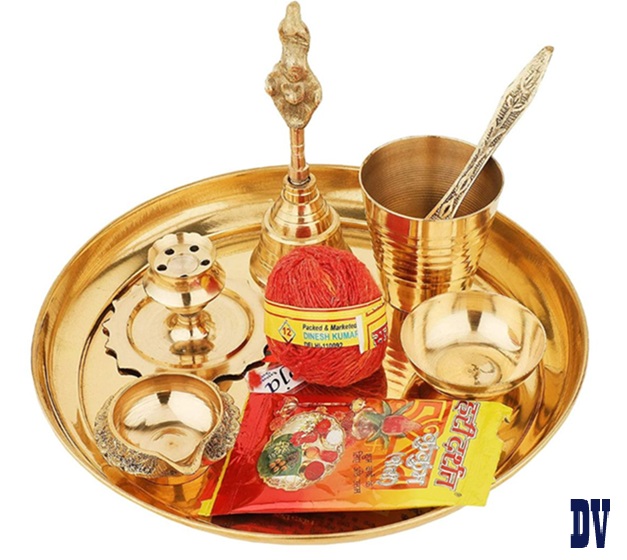Official Website : https://divinenewz.com/
First of all I will give you the brief introduction about JYESHTHA Month.
The name
Jyeshtha is derived from the Sanskrit word
“Jyeshtha” (ज्येष्ठ), which means
“the greatest” or “the eldest.” It corresponds to the
Jyeshtha Nakshatra, one of the 27 lunar constellations, which dominates the sky during the full moon of this month.
The month of
Jyeshtha comes after
Vaishakha and is followed by Ashadha. It is a period of intense heat and dryness, often representing physical discomfort, but also symbolizing a time for inner austerity and spiritual discipline.
Jyeshtha or
Jyēṣṭha (Sanskrit: ज्येष्ठ; Nepali: जेठ jēṭ; Assamese: জেঠ zeth; Odia: ଜ୍ୟେଷ୍ଠ Jyeṣṭha) is a month of the Hindu calendar. In India’s national civil calendar, Jyestha is the third month of the year. Known as
Joishtho (Bengali: জ্যৈষ্ঠ Jyôishţhô) in Bengali, it is the second month of the Bengali calendar.
In lunar religious calendars, Jyēṣṭha begins on the new moon and is the third month of the year.
Shani Dev Jayanti is celebrated on New Moon day i.e.
Amavasya of Jyeshtha month.
|
If You Need to Know More About Jyeshtha Month- then read our article – JYESHTHA MONTH 2025 |
WHAT IS DAAN, DAKSHINA OR CHARITY?
In many spiritual traditions, especially within Hinduism, Buddhism, Jainism, the act of giving is considered a noble and purifying deed. The Sanskrit word “Daan” (or “Dana”) translates to “donation”, “charity”, or “gift” in English. However, the meaning of Daan goes far beyond simply giving material possessions; it embodies a moral, spiritual, and ethical dimension that contributes to one’s personal and societal well-being.
Daan is a voluntary act of selflessness, often undertaken without any expectation of return. It is an offering made with devotion, compassion, and a sense of duty toward others and the universe. This concept has been deeply ingrained in Indian culture and is considered one of the most powerful tools for spiritual growth.
Dāna (Sanskrit: दान) means giving, often in the context of donation and charity. In other contexts, such as rituals, it can simply refer to the act of giving something. Dāna is related to and mentioned in ancient texts along with concepts of Paropakāra (परोपकार) which means benevolent deed, helping others; Dakshinā (दक्षिणा) which means fee one can afford; and Bhikshā (भिक्षा), which means alms.
THE SPIRITUAL SIGNIFICANCE OF DAAN OR DAKSHINA
In Hinduism, Daan is one of the six duties (Shatkarma) of a householder. It is considered an important part of dharma (righteous duty). The sacred scriptures like the Bhagavad Gita, Vedas, and Upanishads emphasize that giving purifies the soul and removes greed, ego, and attachment. According to the Bhagavad Gita (17.20), the best form of Daan is that which is given without expecting anything in return, at the right time, and to a worthy recipient.
In Buddhism, Daan is the first of the ten perfections (Paramitas) practiced to attain enlightenment. The concept of selfless giving is fundamental in cultivating compassion and reducing ego. Jainism also promotes Daan as a part of Ahimsa (non-violence) and ethical living. Sikhs are encouraged to engage in Dasvandh, which means donating one-tenth of their earnings for noble causes.
TYPES OF DAAN (DONATIONS)
1. Annadaan (Donation of Food)



THE ETHICS OF DAAN
Daan is not about how much one gives, but how and why one gives. The intentions behind the act are more significant than the amount or value of the donation. Key ethical principles of Daan include:
ii) Shubh Daan: Giving at the right time, to the right person, with good intention.
iii) Gupt Daan: Giving secretly or anonymously, without boasting or publicizing the act.
DAAN IN FESTIVALS AND RITUALS
Daan is especially emphasized during religious festivals and auspicious days such as:
ii) Akshaya Tritiya: Donating gold, grains, and water; believed to bring eternal blessings on Akshaya Tritiya.
iii) Purnima (Full Moon Days): Giving food, clothes, and money to Brahmins or the poor.
iv) Pitru Paksha: Donating food and clothes in memory of ancestors.
On these days, Daan is believed to carry multiplied spiritual benefits and blessings.
WHY SHOULD ONE PRACTICE DAAN?
ii) Promotes Gratitude: It reminds the giver of their own blessings and the responsibility to share.
iii) Attracts Good Karma: In spiritual belief systems, Daan purifies one’s past karma and leads to positive outcomes.
iv) Fosters Compassion: Regular giving enhances empathy and emotional connection with others.
iv) Strengthens Society: Generosity builds a culture of sharing, care, and cooperation.
Daan is not merely an act of giving but a way of living. It reflects the values of compassion, humility, and selflessness. Whether it’s offering food to a hungry person, educating a child, or donating funds to a charitable cause, each act of Daan contributes to both personal spiritual upliftment and societal well-being.
In a world often driven by materialism and self-interest, the age-old practice of Daan reminds us of our shared humanity. True Daan lies in giving with joy, detachment, and love, making it a timeless virtue relevant across all eras and cultures.
In Hinduism, the concept of daan (donation or charity) is considered one of the most sacred duties. It reflects selflessness, compassion, and detachment from material possessions. Among all the months in the Hindu lunar calendar, the Jyeshtha month, which usually falls during May-June, holds unique significance for performing charitable acts. The month is marked by extreme summer heat, and donating specific items during this time is seen as an act of both spiritual purification and social responsibility.
Now, I will explain the various items recommended for donation in the month of Jyeshtha, their spiritual significance, the scriptural basis, and the benefits of each form of daan.
WHY IS DAAN IMPORTANT IN JYESHTHA MONTH?
The Jyeshtha month is characterized by scorching temperatures, water scarcity, and physical discomfort for many. As such, Hindu scriptures encourage acts of charity and compassion during this time to alleviate suffering and promote welfare.
KEY REASONS FOR DAAN IN JYESHTHA:
ii) Spiritual purification: Donation is believed to cleanse karmas and remove negative planetary effects.
iii) Social harmony: Providing for the poor, animals, and ascetics ensures balance and kindness in society.
iv) Religious merit (Punya: Donations during this holy month yield multiple times more punya, especially on auspicious days like Nirjala Ekadashi, Ganga Dussehra, and Jyeshtha Purnima.
MOST AUSPICIOUS ITEMS TO DONATE DURING JYESHTHA MONTH
Let us explore the major categories of donations with explanations of their significance.
a)Water-filled Pots (Kalash Daan)
– Significance: Water represents life, purity, and sustenance.
– It provides immediate relief from the heat for travelers and laborers..
– Cooling and purifying water naturally, these pitchers are essential in Indian summers.
– This act is considered Mahadaan during Jyeshtha.
a) Umbrella (Chhatra Daan)
– Recommended especially for monks, Brahmins, and travelers.
– Donating pankhas to temples, schools, or poor families is believed to please the deities.
a) Buttermilk (Chhachh) and Aam Panna
– These drinks prevent dehydration and restore energy in the intense heat.
– Giving them to Brahmins, cows, or temples earns religious merit.
– Especially meaningful on Ganga Dussehra and Ekadashi days.
a) Cotton Clothes
– Ideal for ascetics, the poor, and laborers.

– Donating slippers or sandals protects the feet from the hot ground.
Hindu scriptures emphasize donating essentials to Brahmins, sannyasis, and the poor.
– Anna daan is considered maha daan – the highest form of charity.
– Especially relevant after performing puja or Yajnas.
a) Donation of Puja Items
– Support temple maintenance or sponsor religious events.

– Encouraged for householders seeking spiritual growth.
a) Feeding Animals
– Feed birds by placing water pots and grain on rooftops or balconies.
– These trees give oxygen, shade, and spiritual benefits.
AUSPICIOUS DAYS IN JYESHTHA FOR PERFORMING DAAN
a) Nirjala Ekadashi
– Donating water, mats, clothes, hand fans, and food earns immense merit.
– Performing jal daan and bathing in holy rivers is recommended.
SCRIPURAL REFERENCES SUPPORTING DAAN IN JYESHTHA MONTH
– Manu Smriti and Mahabharata refer to daan as one of the five daily duties (pancha mahayajnas). – Saints and gurus across traditions have emphasized service during summer as a path to both karma yoga and bhakti.
SPIRITUAL AND KARMIC BENEFITS OF DAAN
– Gains blessings from gods, sages, and ancestors.
– Removes malefic effects of planets, especially Saturn (Shani), Rahu, and Ketu.
– Brings peace of mind, health, longevity, and prosperity.
– Helps one detach from material greed and cultivate compassion and gratitude.
MODERN WAYS TO PRACTICE DAAN DURING JYESHTHA MONTH
– Donating to NGOs for clean water projects.
– Sponsoring plantation drives or water stations in public places.
– Sending summer relief kits to rural villages or poor urban communities.
– Using online platforms to fund cow shelters, temple upkeep, or poor students.
– Helps one detach from material greed and cultivate compassion and gratitude.
In Hinduism, giving is not just a physical act, but a sacred duty and spiritual offering. Practicing daan in the Jyeshtha month transforms not just the receiver’s life—but also brings peace, purity, and blessings into the life of the giver.
WRAPPING UP
It is a month that emphasizes austerity, discipline, and devotion, as the scorching summer heat serves as a reminder of detachment from material comforts and encourages inner purification. You still have any question, feel free to ask me via comments or via email.
Don`t forget to share what you like here on Youtube, Facebook, Instagram with your friends and family. At DivineNewz, a spiritual and temples news related information providers, is working on the project to work for religion and information about the temples to share with you to bring new ideas about spiritual and religious world.
Get in touch with DivineNews by contacting by divinenewz6@gmail.com/ For more information, please visit: https://www.divinenewz.com

ARTICLE WRITTEN BY:
Divinenewz is a firm Working very proficiently for sharing the divinely knowledge, darshan and pilgrim details and many more in spiritual field. If you have any unique temple and divine place around the globe, then contact us at divinewisdom0608@gmail.com, divinenewz6@gmail.com, or
For more information, please visit:
https://www.divinenewz.com




